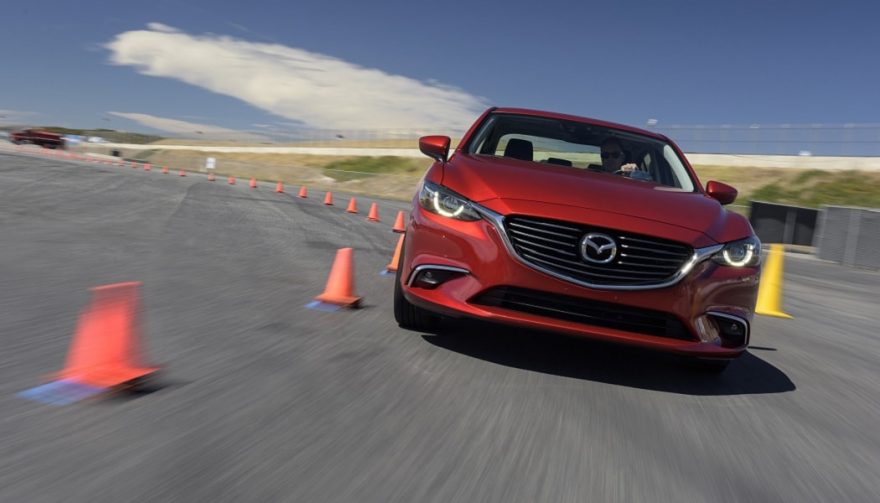
Mazda's new G-Vectoring Control software is the result of an eight-year study
How Mazda’s New G-Vectoring Improves Your Jinba Ittai
Mazda thinks its latest innovation, G-Vectoring Control, will help your “jinba ittai.” Maybe you weren’t even aware that you have jinba ittai, but Mazda thinks you do. The Japanese phrase loosely translates as “horse and rider as one.” In Mazda design and engineering parlance, it means driving should be natural and intuitive. The car should feel like an extension of the driver’s body.
Mazda relies heavily on appealing to the driver by heightening the “sense of fun” in driving. This is how the zoom-zoom company differentiates itself from the competition. Mazda believes that their latest G-Vectoring Control (GVC) will not only make you a better driver, but increase the amount of “fun” you experience while driving.
G-Vectoring Control: Enhancing Driver and Car Connection
G’s are the unit of measurement of the force applied to you, passengers and car during lateral and longitudinal acceleration. You feel G’s when you accelerate, turn and brake. The idea behind G-Vectoring Control is to smooth out those forces by imperceptibly shifting the weight of the vehicle.
In a nutshell, G-Vectoring Control is an electronic system that briefly retards spark timing when sensors detect that the driver has turned the steering wheel while at speed. This interruption of power dips the front end of the vehicle (almost imperceptibly) and causes two simultaneous reactions:
- The front tires compress as the vehicle’s mass moves forward. This gives the tires a bigger footprint, improving grip, stability and response.
- The nearly undetectable change in velocity and drop in the nose of the vehicle signal passengers’ brains that a change of direction is imminent, which prepares their neck muscles and equilibrium for the turn. More about this later.
G-Vectoring Control is a software package. At its heart it is a very slick algorithm. It takes driver’s input from the steering wheel and calculates the optimal dump of torque to provide the most effective shift of weight to the front (steering) tires.
In essence, GVC is using the engine to slightly decelerate the car by tweaking the torque. Why is instantaneous response important? When the tires turns simultaneously with the steering wheel, oversteering, or guessing what the right angle of turn is, becomes a thing of the past. So do the extra G’s that are generated by oversteering. The car follows the track the driver intended.
Mazda spent eight years studying how humans walk, run and turn without losing balance. Not your typical automotive research project. The objective was to identify how people react to acceleration and then use those responses to create a perfect blend of longitudinal and lateral G-forces.
Does this kind of research seems a bit extreme? Not for Mazda. The folks there consider themselves as a group of enthusiasts building cars for enthusiasts.
Real World Benefits of a Technology You Don’t Really Notice
The real-world benefits of this system are significant but subtle. For starters there’s improved handling. Where you are likely to really take notice of the improved performance is driving in snow or on icy roads.
When you reduce G-forces in these types of conditions you can enhance vehicle stability. Then there is the extra confidence that comes with knowing the vehicle will go where you aim. That confidence can only be measured in jinba ittai.
In conclusion, the driver experiences improved stability, increased traction and reduced workload. Passengers benefit from a more comfortable ride.
Does It Work?
Professional automotive critics almost universally agree that it does. You have to remember that these guys and gals make their living driving and understanding the dynamics of driving.
If you want to juice up your jinba ittai you really ought to take a look at a 2017 Mazda 3 or Mazda 6. G-Vectoring Control will be rolled out across the entire line but for this year just the coupe and sedan have it.





